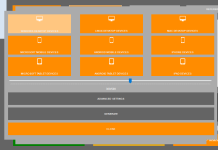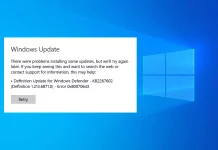How to setup a shopify store 2024
Shopify Store is a software programme that allows you to construct a website and sell, ship, and manage your products using their shopping cart solution. You gain access to an easy-to-use admin interface where you can add products, handle orders, and enter store data when you use their service.
We’ll show you how to utilise Shopify in this guide so you can get your online business up and running as soon as possible.
Step #1 Signup with Shopify
- Click the ‘Start free trial’ button after entering the required information.
2. Check out Shopify.com. Create an account using the signup form.
Shopify store name needs to be unique. You’ll be asked for a few additional details after this initial page, like your name, address, nationality, and phone number.
Once complete, click ‘I’m done’.
Step #2 Setting Up Your Store
You’ll be sent immediately to your store admin screen after signing up. You may now begin personalising your store, uploading products, and configuring payment and delivery options.
Step #3 Choose a Suitable Theme
Shopify has its own theme marketplace. These themes all come with complete support from the creators, so you can rest assured that your store is in good hands.
There are both free and premium themes available. They all come with a thorough list of changes you can make without touching a line of code. Premium themes, on the other hand, usually include more customization possibilities and a cleaner appearance.
Log into Shopify and go to themes.shopify.com to browse the Shopify Theme Store. There are approximately 70 different theme variations to pick from, including a large number of free ones.
Other marketplaces, such as TemplateMonster, may also have Shopify themes. Simply select a category and features to create your theme.
You can sort the results by price, industry, and features. Themes can also be sorted by price, popularity, and newness.
Step #4 Edit Shopify Settings
You can rest confident that you won’t end up with a website that looks like a clone of thousands of other stores because the majority of Shopify themes allow you to make minor tweaks that can dramatically alter the design of your store.
Select ‘Themes’ from the left navigation menu on your admin screen. Your live theme will be displayed in a box at the top of the page, with two buttons in the top right corner. The first one is “Actions”, which gives you some basic settings changes. One of these allows you to make a duplicate of the theme. We highly recommend you do this in case you make some changes you don’t like, you can delete the duplicate and start again.
The following are the most common characteristics:
- Uploading logos
- Uploading slides to a homepage carousel
- Adding related item functionality to product pages
- Choosing how many items appear on each line of the collection pages
- Color schemes
- Font choices.
Step #5 Adding products to your store
Navigating the bar on the left select ‘Products’. You will then see a green ‘Add a product’ button in the middle of the page. Use the following screen to add as much detail as needed about your products.
Close-up shots of your products can help sell them, so make sure you show them off to their best advantage. We recommend keeping all images in the same dimensions to keep your business looking neat. Unless you plan to make your collection pages look like a Pinterest board.
Once everything is filled out, always remember to click the ‘Save product’ button in the top and bottom right corners.
Step #6 Payment Gateways
You can accept payments from your clients via your website using a payment gateway (Settings -> Payments). It’s necessary to look at the pricing and commission rate, but it’s also important to look at the features they provide. Payment gateways are not all made equal.
On top of Shopify’s own transaction fees, payment gateway transaction fees are levied. Shopify Payments is available to stores in the United States and the United Kingdom. Depending upon your Shopify plan, you can save on these extra costs. Depending on your plan, you will receive these highly appealing rates.
Basic 2.4% + 20p
Professional 2.1% + 20p
Unlimited 1.8% + 20p
Depending on how many transactions you make every month, it could be worth upgrading to take advantage of these savings.
Step# 7 Add a Domain Name
A domain name is required to make your website active. There are two options for you.
To begin, you can purchase a domain from Shopify, which will be promptly added to your store. This saves you time, especially if you are unfamiliar with website hosting. These domains usually cost between $9 and $14 per year. The second option is to buy a domain from a third-party provider like GoDaddy. The annual cost of these domains starts at $10.00 USD. The disadvantage is that you’ll have to manually reroute the DNS entries, which can be intimidating at first.
Congratulations, Your New Shopify Store is Ready!
If you have managed that way – congratulations. You should now have a fully working online store.



































